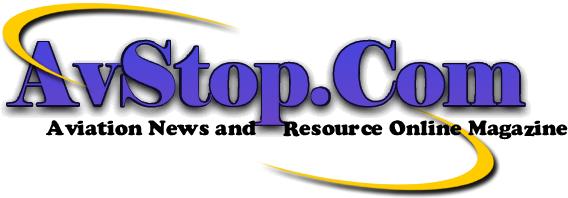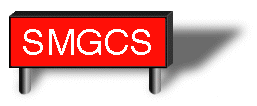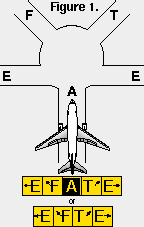


AA/ASY-20 95/001
NOTICE: The following SMGCS pages are for information only. The information is correct as of May, 1995.
In order to enhance taxiing capabilities in low visibility conditions and reduce the potential for runway incursions, improvements have been made in signage, lighting, and markings. In addition to these improvements, Advisory Circular (AC) 120-57, Surface Movement Guidance and Control System, more commonly known as SMGCS (acronym pronounced 'SMIGS'), requires a low visibility taxi plan for any airport which has takeoff or landing operations with less than 1,200 feet runway visual range (RVR) visibility conditions. This plan affects both air crew and vehicle operators. Taxi routes to and from the SMGCS runway must be designated and displayed on a SMGCS Low Visibility Taxi Route chart.
A brief detail of SMGCS features is listed below but SMGCS airports may not have all of these features. For additional SMGCS information refer to the Aeronautical Information Manual or the particular airport's SMGCS Low Visibility Taxi Route chart.
STOP BAR LIGHTS
Stop bars are required at intersections of an illuminated (centerline lighted) taxiway and an active runway for operations less than 600 feet RVR. These lights consist of a row of red unidirectional, in-pavement lights installed along the holding position marking. When extinguished by the controller, they confirm clearance for the pilot or vehicle operator to enter the runway. Controlled stop bars operate in conjunction with green centerline lead-on lights, which extend from the stop bar location onto the runway.
Graphic depictions of normal operation of stop bars include:
When ATC issues a clearance to the pilot to enter the runway they activate a timer. This action causes the red stop bar to be extinguished and the green lead-on lights to illuminate.
After traveling approximately 150 feet beyond the stop bar, the aircraft or vehicle activates a sensor. This sensor relights the red stop bar and extinguishes the first segment of the lead-on lights between the stop bar and the sensor. This protects the runway against inadvertent entry by a trailing aircraft or vehicle.
The aircraft then activates another sensor at approximately 300 feet which extinguishes the remaining lead-on lights.
If either sensor is not activated within a specified time limit, the stop bar will automatically reset to "on" and both sets of lead-on lights will be turned "off."
Should the pilot or vehicle operator have a discrepancy between the condition
of the stop bar or lead-on lights and the verbal clearance from the controller,
the aircraft or vehicle shall stop immediately.
WARNING
PILOTS SHALL NEVER
|
|---|
RUNWAY GUARD LIGHTS
A Runway guard lights, either elevated or in-pavement, will be installed at all taxiways which provide access to an active runway. They consist of alternately flashing yellow lights. These lights are used to denote both the presence of an active runway and identify the location of a runway holding position marking.
TAXIWAY CENTERLINE LIGHTING
A Taxiway Centerline lights guide ground traffic under low visibility conditions and during darkness. These lights consist of green in-pavement lights.
GEOGRAPHIC POSITION MARKINGS
ATC will verify the position of aircraft and vehicles using geographic position markings. The markings can be used either as hold points or for position reporting. These checkpoints or "pink spots" will be outlined with a black and white circle and be designated with a number, a letter, or both.
CLEARANCE BAR LIGHTS
A Three yellow in-pavement clearance bar lights will be used to denote holding positions for aircraft and vehicles. When used for hold points, they are co-located with geographic position markings.
|
Sign and Location |
Pilot Action/Sign Purpose |
|---|---|
|
On Taxiways at Intersections with Runway and at Runway/Runway Intersection |
Do Not cross unless clearance has been received (towered airport). At runway/runway intersections, hold short if land and hold-short clearance has been accepted. |
|
Hold Position on Taxiway Located in Runway Approach or Departure Area Hold |
Controlled Airport- Hold when instructed by ATC. Noncontrolled Airport- Proceed when no traffic conflict exists. |
|
ILS Critical Area |
Hold when instructed by ATC when approaches are being made with visibility less than 2 miles or ceiling less than 800 feet. |
|
Areas where Aircraft are Forbidden to enter |
Do not enter. Identifies paved areas where aircraft entry is prohibited. |
|
Taxiway |
Identifies taxiway on which aircraft is located. |
|
Runway |
Identifies runway on which aircraft is located. |
|
Edge of Protected Area for Runway |
These signs are used on controlled airports to identify the boundary of the runway protected area. It is intended that pilots exiting this area would use this sign as a guide to judge when the aircraft is clear of the protected area. |
|
Edge of ILS Critical Area |
These signs are used on controlled airports to identify the boundary of the ILS critical area. It is intended that pilots exiting this area would use this sign as a guide to judge when the aircraft is clear of the ILS critical area. |
|
Taxiways and Runways |
On Taxiways- Provides direction to turn at next intersection to maneuver aircraft onto named taxiway. On Runways- Provides direction to turn to exit runway onto named taxiway. |
|
Taxiway |
Provides general taxiing direction to named runway. |
|
Taxiways and Runways |
Provides general taxiing direction to identified destination. Other destination signs include directions to taxiway, runway. |
|
Runway |
Provides remaining runway length in 1,000 feet increments. |
|
HS-1 |
Land and Hold Short point for other than intersecting runways as instructed by ATC. |
|
Taxiway Ending Marker |
Indicates taxiway does not continue. |

|
|
|
Color And Type Of Signal |
Movement of Vehicles, Equipment and Personnel |
Aircraft on the Ground |
Aircraft in Flight |
|---|---|---|---|
|
Steady green |
Cleared to cross, proceed or go |
Cleared for takeoff |
Cleared to land |
|
Flashing green |
Not applicable |
Cleared for taxi |
Return for landing (to be followed by steady green at the proper time) |
|
Steady red |
STOP |
STOP |
Give way to other aircraft and continue circling |
|
Flashing red |
Clear the taxiway/runway |
Taxi clear of the runway in use |
Airport unsafe, do not land |
|
Flashing white |
Return to starting point on airport |
Return to starting point on airport |
Not applicable |
|
Alternating red and green |
Exercise extreme caution |
Exercise extreme caution |
Exercise extreme caution |
To receive a printed copy of "Airport Markings, Signs, And Selected Surface Lighting, FAA/ASY-20 95/001" brochure from which these pages are based that also includes a detachable airport sign/marking guide designed to fit in an approach plate book - write:
FAA/ASY-20
400 7th Street, S.W.
Washington, D.C. 20590
| ?AvStop Online Magazine Contact Us Return Home |